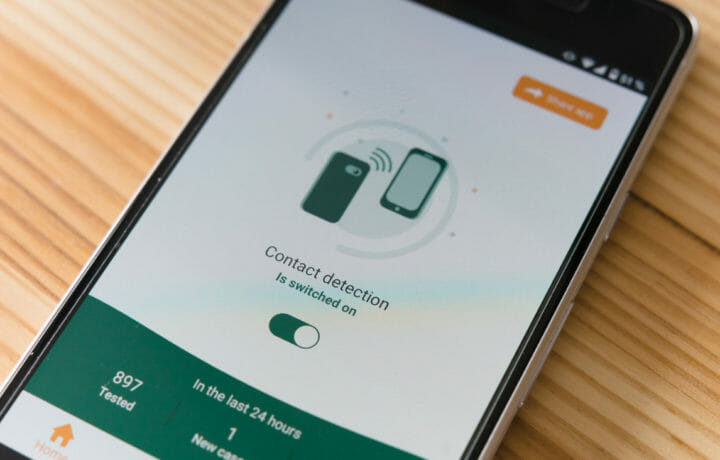To date, there have been more than 13.6 million cases of Covid-19 in the United States. While efforts are underway to get a vaccine to the populace in the coming months, for now, testing and contact tracing have been important efforts in stopping the spread of the novel coronavirus.
For the United States military, this has been a serious undertaking, as the Covid-19 pandemic has impacted operational readiness. The most significant example of this was in the spring, during the initial first wave, when the U.S. Navy’s USS Theodore Roosevelt (CVN 71) was sidelined after the virus spread through the warship, which required it to remain in port in Guam for two months.
All branches of the military have sought to utilize contact tracing. In July, the United States Coast Guard launched a contact tracing program that could identify service members, civilian employees, and even family members residing in CG-owned housing who may have come into contact with someone infected with Covid-19.
Last month, the Department of Defense (DoD) also launched an effort that could improve upon contact tracing with an initiative called “proximity logging.” The Defense Health Agency (DHA) called upon commanders and Force Health Protection staff to be able to automatically record person-to-person exposure within defined areas that could include ships and training facilities. This can help identify, and notify at-risk personnel based on how close they may have to come to an infected individual(s).
An App For That
Multiple states have also gotten onboard with contact tracing tools, and earlier this week, Washington State announced that more than 200,000 people have already signed up for a Covid-19 notification phone app.
Gov. Jay Inslee has implored residents to sign up for it, and said that if enough Washingtonians were comfortable signing up for it, the app could reduce the number of people getting infected. The Washington Exposure Notification app is just one that allows people to know of potential exposure.
Along with similar apps, it utilizes Bluetooth technology developed by tech giants Apple and Google, where it can detect proximity to other phones. If someone running the app tests positive, the app can anonymously notify others who were within six feet.
The app, which was developed by the University of Washington and the state’s Department of Health (DOH), reportedly works without collecting or revealing any location or personal data.
However, this form of contact tracing could be an issue for the Joint Staff Operations Security (OPSEC), which has put limits on the types of tracking used by DoD personnel including civilian employees. Deployed service members are already banned from using fitness tracking apps or other wearable technology that relies on geolocation on military bases.
For the same reasons, Covid-19 contact tracing solutions could face a similar ban. This isn’t limited however to the DoD.
“Many of the concerns people and organizations have with contact tracing relates to the lack of transparency among vendors who use the technology,” explained Charles King, principal analyst at Pund-IT.
“Proffered assurances aside, there are past examples where vendors’ claims were revealed as false or misleading after security breaches occurred,” King told ClearanceJobs. “Given those experiences, the military and DoD’s bans of related apps seems perfectly reasonable.”
What further complicates matters is the spread of misinformation about Covid-19.
“The promotion of bogus pseudoscience and systematic undercutting of science professionals have eroded the trust that many people had in scientific organizations and government agencies,” King added.
Alternate Tracing
Even as the DoD has barred the use of some technology, the DHA has called for an unobtrusive device that could support proximity estimations along with data recording in all military environments.
According to an October contact solicitation from the DHA, such a security and privacy-compliant solution would be able to capture, analyze, and visualize data, which would allow it to trace infectious diseases but also detect chemical, biological, radiological, and nuclear threat exposure.
The solicitation’s “Area of Interest” document addressed some key points including security:
“The solution should also support the capture, analysis, and visualization of data and must comply with DoD cyber, operational security, and PII/PHI protection requirements. Devices must be survivable in required DoD environments and solutions should consider options to accommodate implementations in Wide Area Network (WAN) disconnected environments. The solution should also consider adaptability to future infectious disease threats and CBRN threat proximity detection.”
While it could still track an individual, one notable difference is that such a device wouldn’t be tied to a user’s smartphone, thus containing no personal data.




